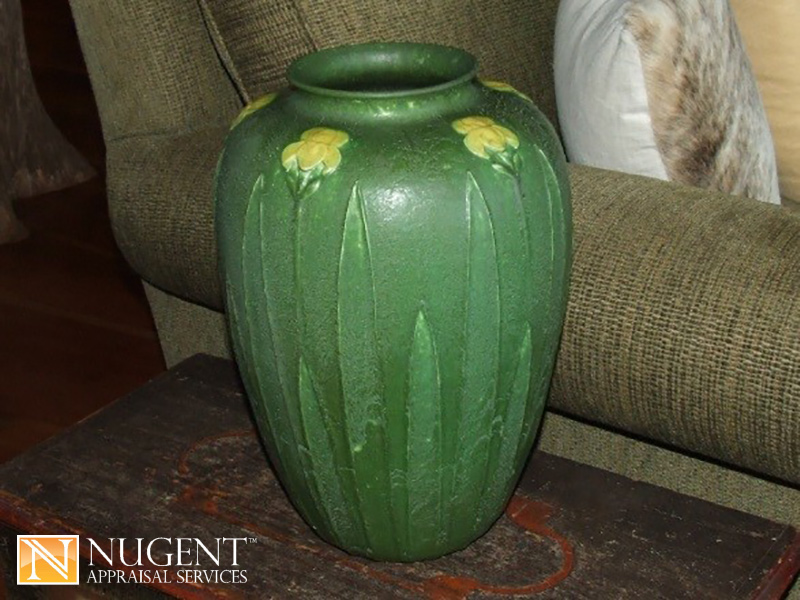Fleur de Lis vase modeled by Lillian Newman
Grueby Faience Co. painted and glazed earthenware Fleur de Lis vase modeled by Lillian Newman, impressed GRUEBY FAIENCE Co/BOSTON USA, N within a circle (for Lillian Newman) and with indistinct numbers 15 inches tall
Replacement Value: $150,000
This exceptional vase is one of at least eight variations on the iris motif made by Grueby as early as 1899. The vase is currently the only known example showing the combination of this design and form and is the most spectacular of all the known iris variants. The sheer number of sensitively modeled flower heads, the technical control of their bright yellow glazing against a textured green surface, and the successful adaptation of the decoration to a bold, impressive form all satisfy the ambitious design.
An otherwise unidentified ”vase for lamp, green enamel finely veined, fleur-de-lis decoration” was exhibited at New York’s National Art Club in November 1899. The April 1901 Keramic Studio published vases with two, or perhaps three, clusters of a single iris with leaves. These appear to be like the very fine vase with handles and one mauve and one yellow blossom on a deep green body formerly in the collection of William Curry, now at the Hood Museum of Art.
Sometime in 1900, a pair of single-color vases with five clusters of fleurs-de-lis completely encircling the body was photographed in the Grueby shop. These pieces were probably destined for the Paris Exposition Universelle, to which Grueby sent a large consignment of pottery, or the Pan-American Exposition of 1901 in Buffalo. A five-cluster iris vase was purchased by the financier and philanthropist Jacob Schiff at the Buffalo exhibition and donated it the following year to the Museum für Kunsthandwerk in Frankfurt am Main. It is slightly fuller than the Hood vase, yet both are marked 146 by Grueby. This vase is fuller still, with a broader shoulder and consequently a more dramatic arc from mouth to foot. The quality of Lillian Newman’s modeling is very high and the precise placement of the canary yellow glaze allows the five iris blossoms to glow in vivid contrast with the bright green body.
Lillian Newman signed this vase with her monogram, an N within a circle, a mark that does not appear frequently.

